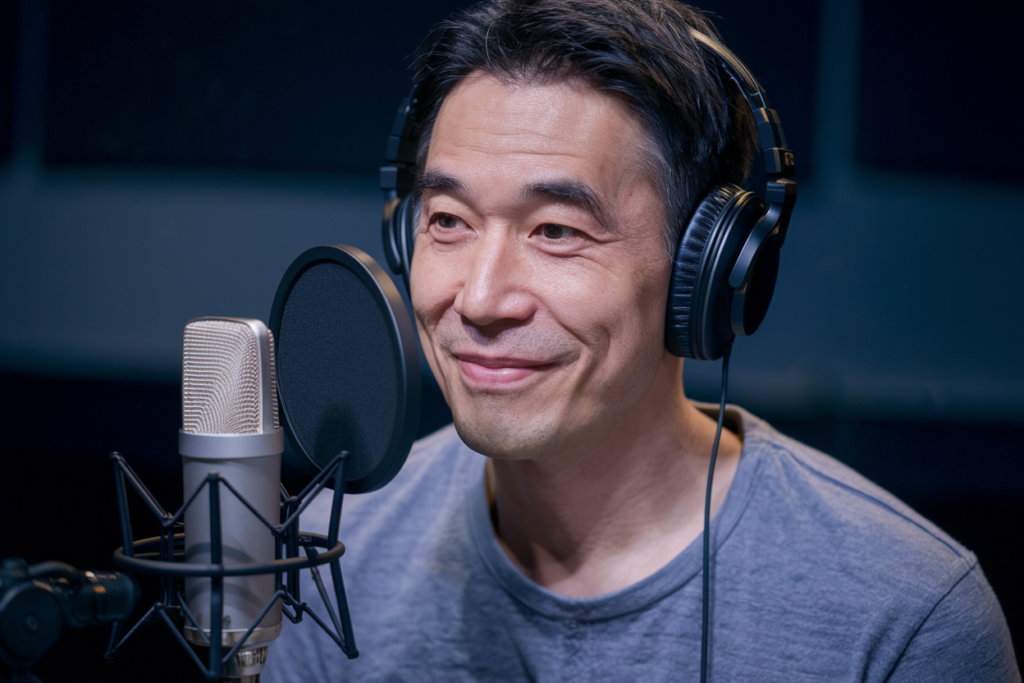Key Takeaways
- Japanese Linguistic Influence: Japanese has significantly impacted various global languages, particularly through pop culture and technology, with terms like “kawaii” and “otaku” becoming commonplace in English.
- Historical Context: The evolution of Japanese language involved early interactions with neighboring languages, notably Chinese and Korean, which enriched its vocabulary and structure.
- Loanwords in Global Use: Japanese loanwords such as “sushi” and “kaizen” illustrate the practical influence of Japanese terminology in both casual conversation and professional settings worldwide.
- Grammatical Adaptations: Beyond vocabulary, Japanese has also influenced grammatical structures in other languages, reflecting its unique sentence patterns adopted by fans of anime and manga.
- Cultural Exchange Dynamics: Cultural exchange through literature, arts, technology, and popular media plays a critical role in integrating Japanese concepts into daily communication globally.
- Voiceover Industry Impact: The voiceover industry demonstrates how cultural influences can shape storytelling techniques across languages while requiring an understanding of cultural nuances for authentic adaptation.
Ever wondered how Japanese has influenced other languages around the world? You might be surprised to learn that this unique language isn’t just confined to Japan. From pop culture to technology, Japanese words and phrases have seeped into everyday conversations across the globe.
Overview of Japanese Linguistic Influence
Japanese has significantly shaped various languages across the globe, particularly in areas like pop culture and technology. The incorporation of Japanese words into different languages often occurs through media such as anime, manga, and video games. For instance, terms like “kawaii” (cute) and “otaku” (enthusiast) effortlessly slip into English conversations.
Linguistic influence extends beyond vocabulary to grammar and syntax in some instances. Certain phrases from Japanese find their way into English speech patterns, fostering a unique blend that reflects cultural exchanges.
Moreover, industries like voiceover benefit from this blending. Voice actors often draw inspiration from Japanese characters when performing in localized versions of animated content or video games. This cross-cultural collaboration highlights how language evolves through artistic mediums.
In addition to informal usage, formal contexts also embrace Japanese influence. International businesses frequently adopt Japanese terminology related to practices such as “kaizen” (continuous improvement) or “kanban” (visual scheduling), showcasing the practicality and relevance of these concepts.
This linguistic interplay underscores a broader trend where language adapts and grows within diverse environments, ultimately enriching global communication.
Historical Context
Japanese has influenced many languages through its historical interactions and cultural exchanges. Understanding these influences reveals how Japanese shaped global communication.
Early Interactions with Neighboring Languages
Japanese language development began in isolation but gradually integrated elements from neighboring languages. Chinese characters, known as kanji, were adopted around the 5th century AD, enriching Japanese vocabulary and writing systems. This integration facilitated early literacy and the establishment of a distinct literary culture. Additionally, contact with Korean influences introduced new linguistic features, enhancing phonetics and syntax in Japanese.
The Rise of Japan and Its Global Impact
Japan’s modernization during the Meiji Restoration (1868-1912) marked significant cultural expansion. As Japan embraced Western technology and practices, it exported unique concepts globally. Terms like “kaizen” (continuous improvement) gained traction in business environments worldwide due to their practical applications. Furthermore, the rise of popular culture—anime, manga, and video games—spread Japanese phrases into everyday conversations across various languages.
The influence extends into industries such as voiceover where specific terminology reflects this cross-cultural exchange. Voice artists incorporate Japanese-inspired narratives or character types that enhance storytelling in international projects. As you explore these dynamics within language contextually intertwined with global trends, you may discover how powerful yet subtle these connections can be in shaping modern communication.
Key Contributions to Other Languages
Japanese has significantly influenced various languages, particularly through loanwords and grammatical adaptations. This impact is evident in everyday speech and specialized fields, showcasing the versatility of Japanese language elements.
Loanwords in English and Other Languages
Japanese loanwords permeate English and other languages with terms like “kawaii” (cute) and “sushi,” which have become commonplace. These words often reflect cultural concepts that aren’t easily translated, enriching the vocabulary of many languages. For example, “otaku” describes a passionate fan or enthusiast in areas like anime or gaming. Beyond casual conversation, industries such as entertainment frequently incorporate these terms to connect with audiences familiar with Japanese media.
In addition to pop culture, business environments also adopt Japanese terminology. Words like “kaizen,” referring to continuous improvement practices, find their way into professional discussions globally. This integration demonstrates how practical concepts from one culture can influence business strategies elsewhere.
Grammatical and Phonetic Influence
Japanese not only contributes vocabulary but also affects grammar and phonetics across different languages. Certain sentence structures inspired by Japanese are integrated into English communication styles. You may notice phrases used by fans of anime or manga that mimic the original syntax for effect.
Phonetically, aspects of the Japanese sound system can appear in other languages as well. The clear vowel sounds found in Japanese often lead voice talents to adapt these pronunciations when performing roles influenced by this rich linguistic tradition.
These contributions illustrate a dynamic interplay between cultures where language shapes identity and fosters connections among diverse communities worldwide.
Cultural Exchange and Its Impact
Cultural exchange plays a crucial role in shaping languages, and Japanese has made a significant impact on various global conversations. The integration of Japanese terms into everyday language showcases the fluidity between cultures and how they influence one another.
Literature and Arts
Japanese literature and arts have introduced unique concepts globally, enriching other languages. Terms like “manga” (comics) and “haiku” (a form of poetry) resonate across cultures, reflecting artistic styles that inspire creativity worldwide. This cross-pollination extends to voiceovers, where adaptations of Japanese stories often require skilled voice talent to capture nuanced characters authentically. The storytelling tradition in Japan has influenced narrative structures in many languages, enhancing literary expression through borrowed themes and motifs.
Technology and Popular Culture
Technology and popular culture serve as powerful conduits for cultural exchange. Video games, anime, and fashion trends originating from Japan have led to the widespread adoption of numerous Japanese words in English-speaking contexts. Phrases such as “kawaii” (cute) find their way into casual conversation, illustrating how cultural phenomena shape language use.
In the realm of media production, voiceover artists frequently adapt content from Japanese pop culture for diverse audiences. This adaptation not only requires linguistic skills but also an understanding of cultural nuances to deliver authentic performances. As these elements blend together, they foster connections among audiences while expanding vocabulary beyond traditional boundaries.
As you explore this dynamic interplay between cultures through language adaptation, it becomes clear that every interaction contributes to a richer tapestry of communication that transcends borders.
Conclusion
The influence of Japanese on other languages is profound and far-reaching. Through cultural exchange in media technology and business practices, you’ve seen how terms and ideas from Japanese have enriched global communication. This dynamic interaction not only enhances vocabulary but also fosters deeper connections among diverse communities.
As you embrace these linguistic adaptations, it’s clear that the journey of language is ongoing. Each borrowed term reflects a shared experience bridging cultures and illustrating the power of language to unite us all. The subtle yet impactful ways Japanese has shaped your language enriches everyday conversations while expanding your understanding of different cultures worldwide.
Frequently Asked Questions
What is the global influence of the Japanese language?
The Japanese language has a significant global presence, impacting various aspects of everyday life, especially in pop culture and technology. Terms from Japanese media, such as “kawaii” and “otaku,” have become common in English conversations worldwide.
How has Japanese culture affected other languages?
Japanese has contributed numerous loanwords to other languages, enriching vocabularies with terms like “sushi” and “manga.” These words often encapsulate cultural concepts that are challenging to translate directly.
What role does pop culture play in spreading the Japanese language?
Pop culture, including anime, manga, and video games, serves as a major vehicle for introducing Japanese vocabulary and expressions into global conversations. This cultural exchange enhances communication across diverse communities.
How does business terminology from Japan influence global practices?
Terms like “kaizen” (continuous improvement) and “kanban” (visual scheduling) have been widely adopted in international business settings. They reflect practical concepts that enhance efficiency and collaboration globally.
In what ways has historical context shaped the Japanese language’s influence?
Historically, the Japanese language developed in isolation but gradually incorporated elements from neighboring languages like Chinese and Korean. The Meiji Restoration marked a significant cultural expansion that facilitated this integration.
How does the adaptation of Japanese affect grammar in other languages?
The integration of certain syntax structures and phonetic elements from Japanese into English shows how languages evolve through interaction. This dynamic influences communication styles among diverse speakers.
What unique contributions do terms like “haiku” bring to literature worldwide?
The term “haiku,” representing a distinct form of poetry, showcases how Japanese literary traditions enrich global narrative forms. Such contributions inspire creativity by introducing unique themes and motifs to different cultures.
Why is understanding cultural nuances important in voiceover work related to Japanese content?
Voiceover artists must grasp both linguistic skills and cultural nuances when adapting Japanese media. This understanding fosters deeper connections among audiences while expanding vocabulary beyond traditional limits.







